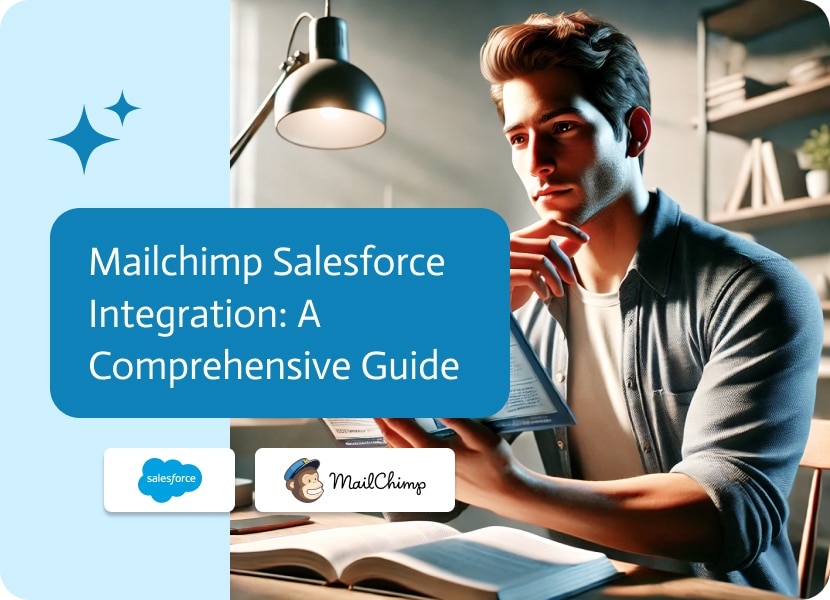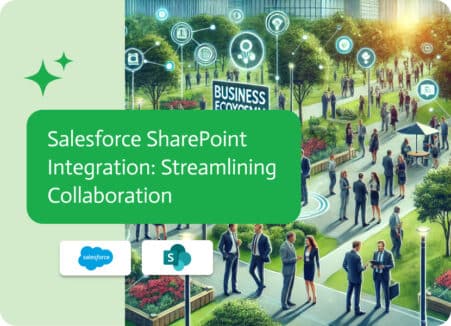

Mailchimp Salesforce Integration: A Comprehensive Guide
The integration between Mailchimp and Salesforce combines the strengths of two powerful platforms—Mailchimp, a top-tier email marketing service, and Salesforce, a leading customer relationship management (CRM) system. This integration empowers businesses to synchronize customer data in real time, automate marketing workflows, and provide personalized experiences that drive better customer engagement. For companies aiming to unite their marketing and sales efforts, the Mailchimp Salesforce integration offers significant value by aligning customer insights with targeted email campaigns, boosting both efficiency and conversion rates.
In this article, we will explore the key features, benefits, best practices, and the step-by-step process for setting up the Mailchimp Salesforce integration. We’ll also cover technical aspects of the configuration, ensuring your team can leverage this integration to its fullest potential.
Key Features of Mailchimp Salesforce Integration
1. Real-Time Data Synchronization
One of the most notable features of the Mailchimp Salesforce integration is its ability to automatically sync data between the two platforms. For example, if a new contact is added in Salesforce, that contact’s information is immediately reflected in Mailchimp. This eliminates the need for manual data entry, reducing the likelihood of errors and ensuring that your email marketing campaigns are always based on the most current data.
This real-time synchronization enables businesses to:
- Keep their Salesforce and Mailchimp databases in sync.
- Segment audiences in real-time, ensuring that email campaigns are targeting the right leads and customers.
- Minimize operational delays that can occur due to outdated or incomplete data.
2. Targeted Campaigns
The integration allows marketers to use Salesforce data to build highly targeted email campaigns within Mailchimp. Leveraging segmentation capabilities, businesses can categorize contacts based on criteria like:
- Lead status
- Industry
- Recent purchases
- Engagement level
This targeted approach ensures that customers receive relevant and personalized communication, improving the likelihood of engagement and conversion.
3. Automation of Tasks
By automating repetitive tasks, the integration frees marketing and sales teams to focus on higher-level strategic initiatives. Some automated actions include:
- Syncing contact information between Salesforce and Mailchimp.
- Reflecting updates such as unsubscribes in both systems.
- Automating follow-up actions based on email engagement (e.g., sending a follow-up email to leads who opened a campaign).
4. Enhanced Personalization
Mailchimp’s dynamic content features, combined with Salesforce data, allow businesses to create personalized emails. Merge tags in Mailchimp can pull specific details from Salesforce, such as customer names, companies, and purchase history. This level of personalization builds stronger connections with customers and boosts the effectiveness of email campaigns.
5. Performance Tracking and Analytics
The integration lets businesses monitor the success of their email campaigns directly within Salesforce. Key performance metrics like open rates, click rates, and bounce rates are tracked, offering insights that can help refine future marketing strategies. This data-driven approach ensures continuous improvement and maximized ROI from email marketing efforts.
Benefits of Mailchimp Salesforce Integration
1. Unified Customer Data
With the integration, all customer data, including contact details, purchase history, and engagement metrics, are unified in one place. This eliminates data silos and allows marketing and sales teams to make more informed decisions based on a complete view of the customer journey.
2. Improved Lead Management
The Mailchimp Salesforce integration helps streamline lead nurturing. By syncing contact information between the platforms, sales teams can use email engagement data to prioritize and adjust their follow-up strategies. For instance, if a lead interacts with a specific email campaign, sales reps can tailor their outreach efforts accordingly, leading to improved conversions.
3. Advanced Audience Segmentation
The ability to segment audiences using Salesforce data allows for more refined targeting in email campaigns. For example, businesses can segment customers by demographic information, past purchases, or even lead scores. Automated workflows further enhance the precision of these campaigns, ensuring that leads and customers receive timely, relevant content.
4. Increased Efficiency and Accuracy
Real-time synchronization ensures that data in Salesforce and Mailchimp is always up-to-date. This reduces manual data entry, minimizes errors, and streamlines marketing operations. Automation of tasks like updating lead statuses and unsubscribes saves time, allowing teams to focus on more strategic activities.
Best Practices for Mailchimp Salesforce Integration
To fully maximize the Mailchimp Salesforce integration, consider the following best practices:
- Thorough Testing: Before fully deploying the integration, conduct thorough testing. This includes checking data synchronization, campaign segmentation, and performance analytics to ensure everything functions as expected.
- Provide Training: Equip your marketing and sales teams with training on how to use the integration effectively. Ensuring everyone is familiar with the new workflows will enhance productivity and collaboration between departments.
- Regular Audits: Perform regular audits of your data synchronization processes to ensure accuracy. Keeping your data clean and up-to-date will help avoid issues like duplicate records or incorrect segment targeting.
- Stay Updated: Both Mailchimp and Salesforce regularly release new features and updates. Stay informed about these changes to ensure your integration remains optimized.
Setup and Configuration
Prerequisites
Before starting the Mailchimp Salesforce integration, make sure you have the following:
- Active Salesforce Account: Ensure you have the necessary permissions to install and configure apps within Salesforce.
- Mailchimp Account: If you don’t already have one, sign up for a free Mailchimp account.
- Third-Party Integration Tool: Tools like Noca AI can simplify the setup process without requiring any coding.
Step-by-Step Integration Guide
- Connect Your Accounts:
- Log into both your Salesforce and Mailchimp accounts.
- Use the third party integration app to connect the two platforms.
- Set Up the Integration:
- In Salesforce, navigate to the “Mailchimp Integration” setup page.
- Enter your Mailchimp API key to establish the connection.
- Configure Field Mapping:
- Map the fields between Salesforce and Mailchimp to ensure data syncs correctly. For example, map fields like “email,” “first name,” and “lead status” between both platforms.
- Set Up Triggers:
- Create triggers that determine when data should be synced. For example, set a trigger to automatically add a new Salesforce lead to a Mailchimp list when it is created.
- Testing:
- Conduct a thorough test of the integration. Add test contacts in Salesforce to check if they are reflected in Mailchimp and vice versa. Test a simple email campaign to ensure the data flows smoothly between the platforms.
- Sync Schedule:
- Determine if you want real-time syncing or prefer a manual sync schedule, depending on your organizational needs.
Maintenance and Updates
After the integration is set up, continuous maintenance is crucial for smooth operations. Regularly audit the synced data, review any discrepancies, and update field mappings as needed. Additionally, stay up-to-date with the latest updates from Salesforce and Mailchimp to leverage new features and maintain compatibility.
Conclusion
This Salesforce integration is a powerful tool for businesses looking to combine their CRM and email marketing efforts. By automating data synchronization, creating targeted campaigns, and enabling advanced personalization, this integration helps businesses engage their customers more effectively. Following best practices during setup, maintaining regular audits, and staying updated on new features will ensure that your Mailchimp Salesforce integration delivers maximum value.


